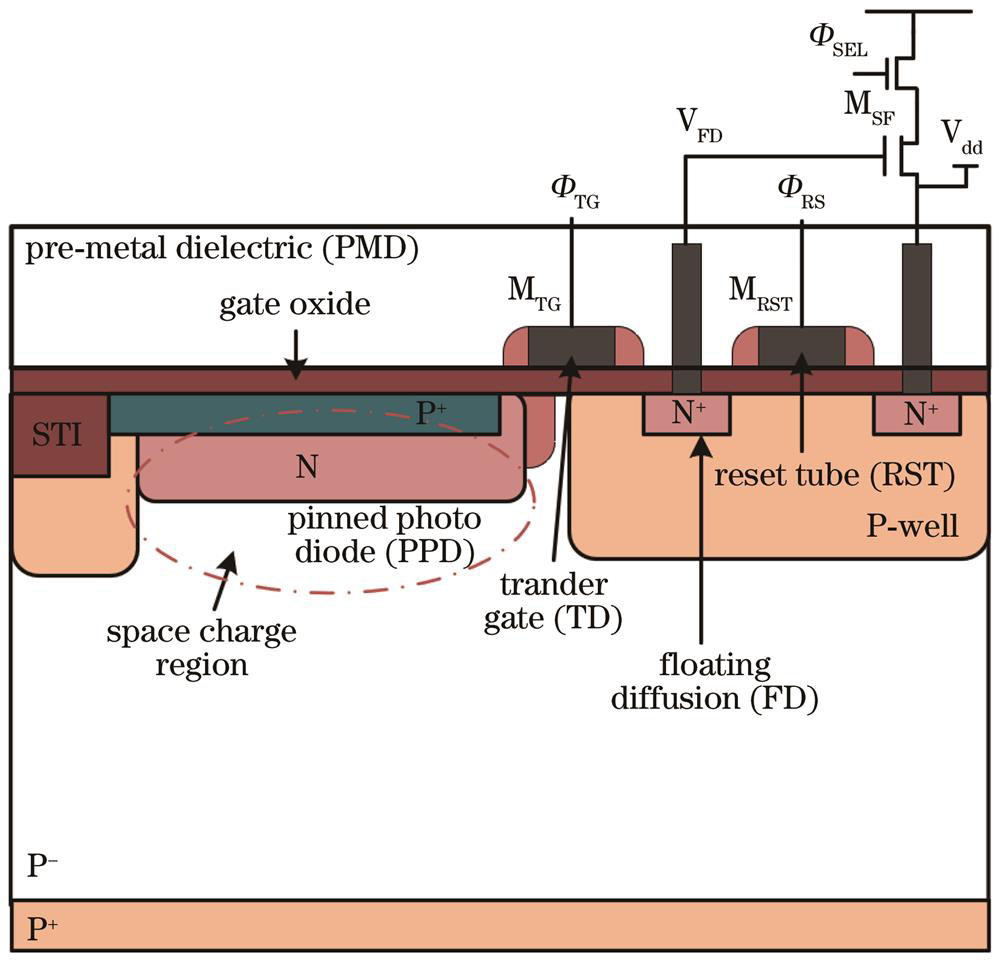Xu Nie, Zujun Wang, Baichuan Wang, Yuanyuan Xue, Gang Huang, Shankun Lai, Ning Tang, Maocheng Wang, Mingtong Zhao, Fuyu Yang, Zhongming Wang. Experiment and Analysis of Damage of CMOS Image Sensor Induced by Proton Irradiation with Different Bias Conditions[J]. Acta Optica Sinica, 2023, 43(19): 1928001
Search by keywords or author
- Acta Optica Sinica
- Vol. 43, Issue 19, 1928001 (2023)
![Section view of pixel unit in 4T PPD type CMOS image sensor[20]](/richHtml/gxxb/2023/43/19/1928001/img_01.jpg)
Fig. 1. Section view of pixel unit in 4T PPD type CMOS image sensor[20]

Fig. 2. Transient bright spot and lines induced by proton irradiation. (a) Transient bright spot; (b), (c), (d) transient bright lines
Fig. 3. Particle incident trajectory. (a) Charged particle incident trajectory; (b) proton incident trajectory
Fig. 4. Generation mechanism of CIS dark current
Fig. 5. Dark signal output images under different radiation fluences with bias voltage of 5 V. (a) Before irradiation; (b) proton fluence is 1×1010 p/cm2; (c) proton fluence is 5×1010 p/cm2; (d) proton fluence is 1×1011 p/cm2
Fig. 6. Relationship between dark signal and proton radiation fluence with and without bias voltage
Fig. 7. Curve of dark signal varying with proton irradiation fluence
Fig. 8. Distribution of pixel counts of dark signal under different proton radiation fluences
Fig. 9. 3D distributions of dark signal spike before and after proton radiation. (a) Before radiation; (b) proton fluence is 1×1010 p/cm2; (c) proton fluence is 5×1010 p/cm2; (d) proton fluence is 1×1011 p/cm2
Fig. 10. Typical two-level defects in CIS induced by proton radiation
Fig. 11. Typical multi-level defects in CIS induced by proton radiation

Set citation alerts for the article
Please enter your email address



